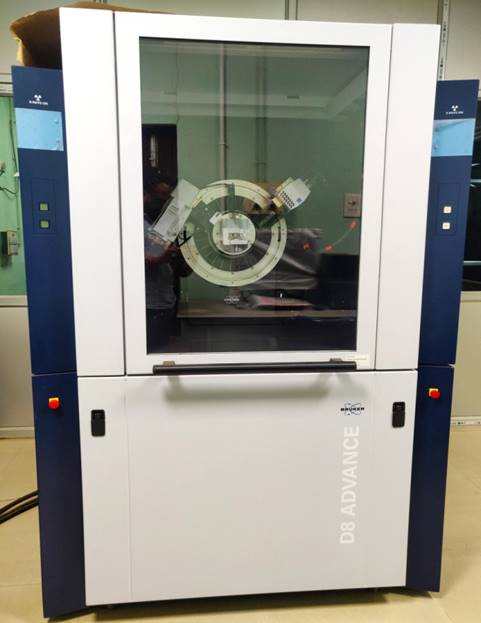Powder XRD (Bruker D8 Advance)
Crystalline substances act as three-dimensional diffraction gratings for X-ray wavelengths similar to the spacing of planes in a crystal lattice. Braggs law relates the wavelength of electromagnetic radiation to the diffraction angle and the lattice spacing in a crystalline material. Scanning the sample through a range of 2θ angles ensures that all possible diffraction directions of the lattice are attained due to the random orientation of the powdered material. X-ray diffraction is now a standardized technique for the study of crystal structures and atomic spacing. The instrument has applications in proteomics, structural biology, drug discovery, development and manufacturing, materials research, clinical research, environmental monitoring, industrial quality control, microbiological research, and many more.

| Instrument | Usage Charge (INR) | |
| For Internal users | For External users | |
| Powder XRD | Rs. 200 per sample | Rs. 500 per sample |
For Technical Details
Dr. Dipanjan Guha
S. N. Bose Innovation Centre (Instrumentation)
Email: dipanjaninvc18@klyuniv.ac.in
Akash Bhattacharya
N. Bose Innovation Centre (Instrumentation), KU

